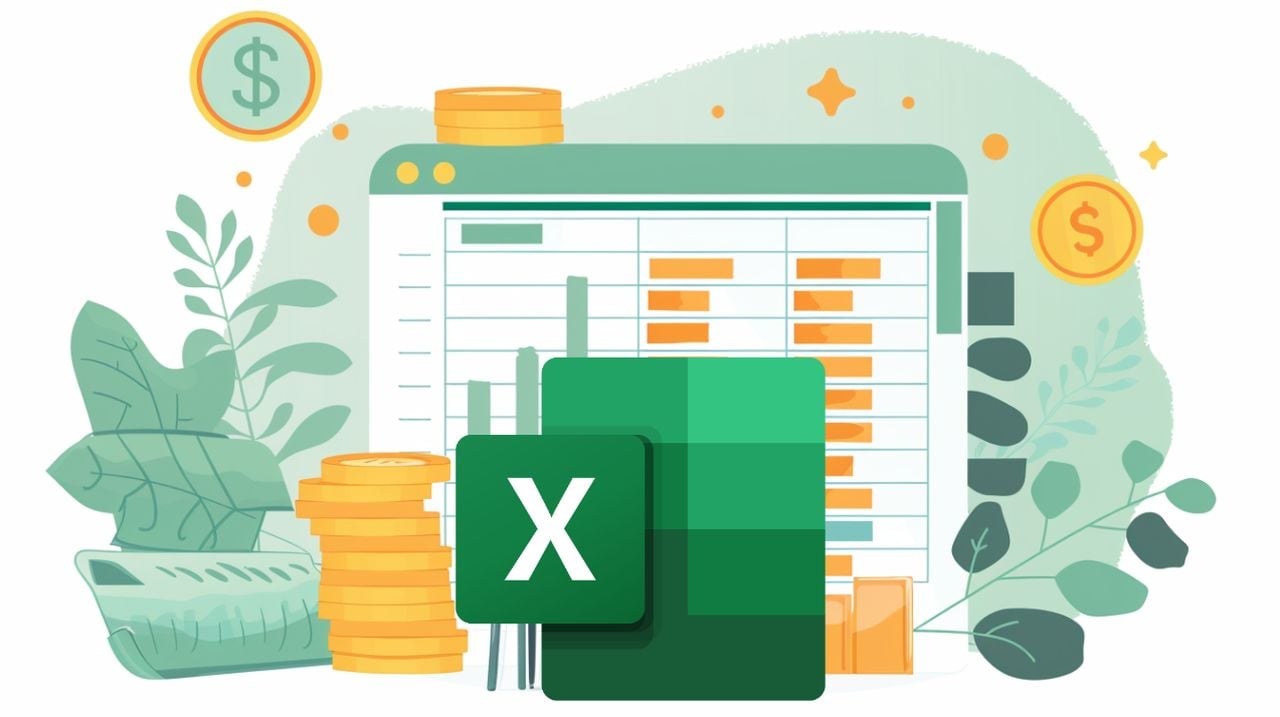In the early stages of a start-up, effective financial management is crucial to ensure sustainability and growth. One vital tool in this endeavor is an Excel burn rate or cash runway dashboard. This dashboard provides a clear picture of how long your start-up can continue to operate before it runs out of cash, given its current expenditure rate and income streams. Below are detailed considerations to keep in mind when building this essential tool.
Key Takeaways
- Essential Tool: An Excel burn rate dashboard is vital for start-up financial management, offering a clear picture of operational sustainability.
- Data Gathering: Collect comprehensive financial data, including cash balances, income projections, and categorized expenses.
- Structured Layout: Design a clear layout with sections for cash balance, income, expenses, burn rate, and runway calculation.
- Automation: Utilize Excel formulas and functions to automate data updates and reduce manual errors.
- Scenario Planning: Implement scenario planning to prepare for various financial outcomes and improve decision-making.
- Regular Review: Schedule monthly updates and quarterly reviews to maintain accuracy and adapt to changes.
- Effective Communication: Use the dashboard to communicate financial health to stakeholders and foster team financial awareness.
- Security Measures: Ensure data security and confidentiality by controlling access and backing up files.
- Continuous Improvement: Regularly solicit feedback and stay updated with new Excel features to enhance the dashboard.
Understand the Purpose
The primary purpose of a Cash Runway Dashboard is to provide a snapshot of your start-up’s financial health. It answers critical questions such as how much cash you have on hand, your monthly burn rate, and how long you can sustain operations without additional funding. By having these insights, start-ups can make informed strategic decisions, adjust spending, and plan for future funding rounds.
Gather Essential Data
Before building your dashboard, gather all necessary financial data. The starting cash balance is the foundation of the dashboard and should include cash in the bank and any liquid assets. Income projections should cover expected revenues from all sources, such as sales revenue, funding from investors, or other income streams. Expenses must be tracked comprehensively, categorizing them into fixed costs (e.g., rent, salaries) and variable costs (e.g., marketing, travel).
Designing the Dashboard Layout
A well-structured layout is key to an effective dashboard. The layout should include several critical sections:
Cash Balance Section
Display the current cash balance prominently, updating it regularly to reflect the latest financial position. This immediate visibility helps in understanding your liquidity status at any given moment.
Income and Expenses Sections
Break down income by source and expenses by category. This granularity helps in identifying trends and making precise adjustments. For example, you might categorize income into product sales, service revenue, and investor funding. Expenses might be divided into salaries, operational costs, and marketing expenses. This detailed breakdown allows for better monitoring and control.
Burn Rate Calculation
Calculate the monthly burn rate, which represents the total monthly expenses. This is a critical metric indicating how quickly your cash reserves are being depleted. By monitoring the burn rate, you can identify periods of increased spending and take necessary actions to manage your cash flow more effectively.
Runway Calculation
Determine the cash runway by dividing the current cash balance by the monthly burn rate. This calculation reveals the number of months the start-up can operate before running out of cash. This metric is essential for planning future funding needs and making strategic decisions about cost management.
Visualization Tools
Utilize charts and graphs to represent the data visually. Graphs for income versus expenses, cash balance over time, and burn rate trends can make the data easier to digest and analyze. Visual representations help in quickly identifying patterns and making informed decisions based on the data.
Automating Data Updates
Manual updates are prone to errors and can be time-consuming. Use Excel formulas and functions to automate data updates. Functions like SUMIF/SUMIFS can aggregate income and expenses by category, while AVERAGEIF/AVERAGEIFS can calculate average burn rates over specific periods. Conditional formatting can highlight key metrics, such as low cash balance or high burn rate periods. Integrating data sources, where possible, linking your dashboard to accounting software or bank statements can streamline the updating process, ensuring your data is always current.
Scenario Planning
Scenario planning is a vital aspect of financial management. Use Excel’s capabilities to create different financial scenarios. For instance, you can model best-case and worst-case scenarios to see how changes in revenue or expenses impact the runway. Simulate the impact of potential investment rounds on cash flow and runway. By adjusting variables such as revenue growth rate, cost changes, and funding injections, you can prepare for various eventualities and make more resilient financial plans.
Regular Review and Update
A Cash Runway Dashboard is not a set-it-and-forget-it tool. Schedule regular reviews to ensure it reflects the current financial situation. Monthly updates to actual income and expenses maintain accuracy, while quarterly reviews allow for reassessment of assumptions and necessary adjustments. Regular reviews help in maintaining financial discipline and adapting to changing circumstances.
Effective Communication
The insights gained from the dashboard are only valuable if communicated effectively. Use the dashboard to create reports for stakeholders, such as investors, board members, and advisors. Sharing key metrics with your team fosters a culture of financial awareness and responsibility. Clear communication ensures that everyone involved understands the financial status and contributes to informed decision-making.
Security and Confidentiality
Ensure that the financial data in your dashboard is secure. Limit access to authorized personnel only and regularly back up your Excel file to prevent data loss. Protecting sensitive financial information is crucial for maintaining trust and integrity within your organization.
Continuous Improvement
Finally, continuously improve your dashboard. Solicit feedback from users and stakeholders to enhance the dashboard’s functionality. Stay updated with new Excel features and best practices in financial management to incorporate them into your dashboard. Continuous improvement ensures that the dashboard remains a valuable asset as the start-up grows and evolves.
Building an Excel cash burn dashboard is a strategic necessity for start-ups. It provides critical insights into financial health, enables effective resource allocation, and aids in strategic planning. By gathering essential data, designing an intuitive layout, automating updates, and incorporating scenario planning, start-ups can create a robust tool that helps navigate the complexities of early-stage business management. Regular review, effective communication, and continuous improvement ensure that the dashboard remains a valuable asset as the start-up grows and evolves. Here are a selection of other articles from our extensive library of content you may find of interest on the subject of improving your Microsoft Excel skills :
Filed Under: Guides
Latest Geeky Gadgets Deals
If you buy something through one of these links, Geeky Gadgets may earn an affiliate commission. Learn about our Disclosure Policy.
Originally Appeared Here



